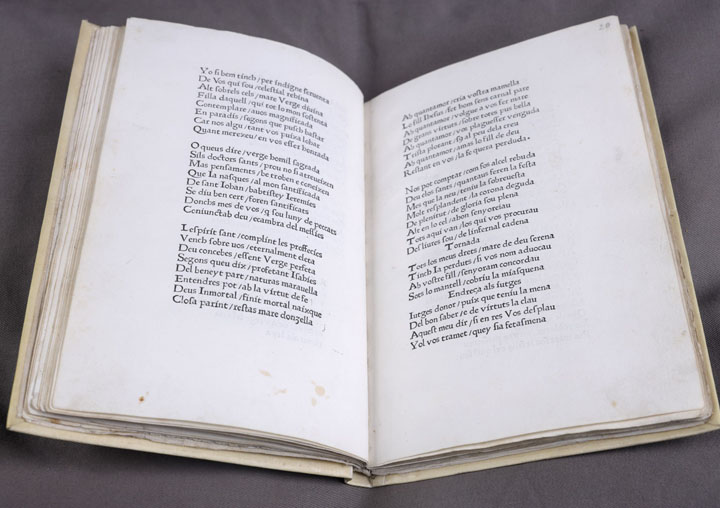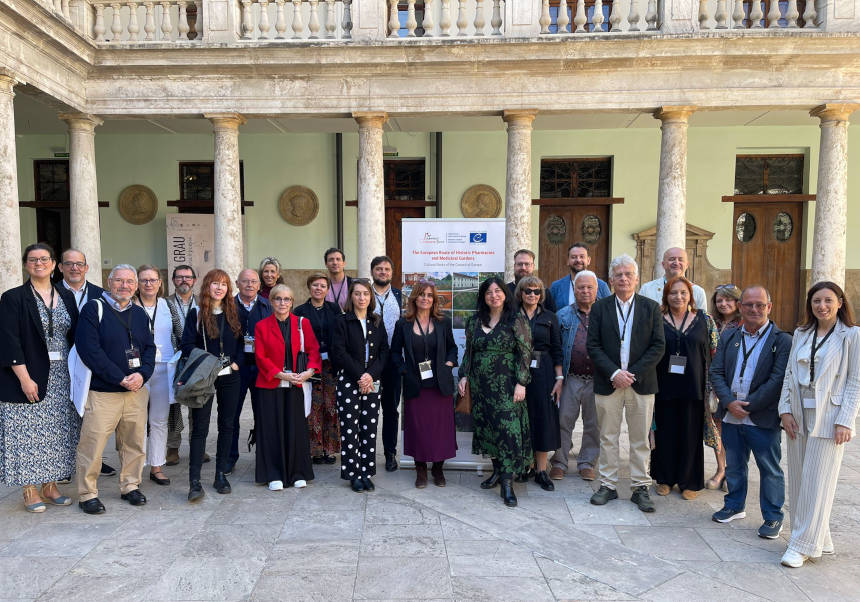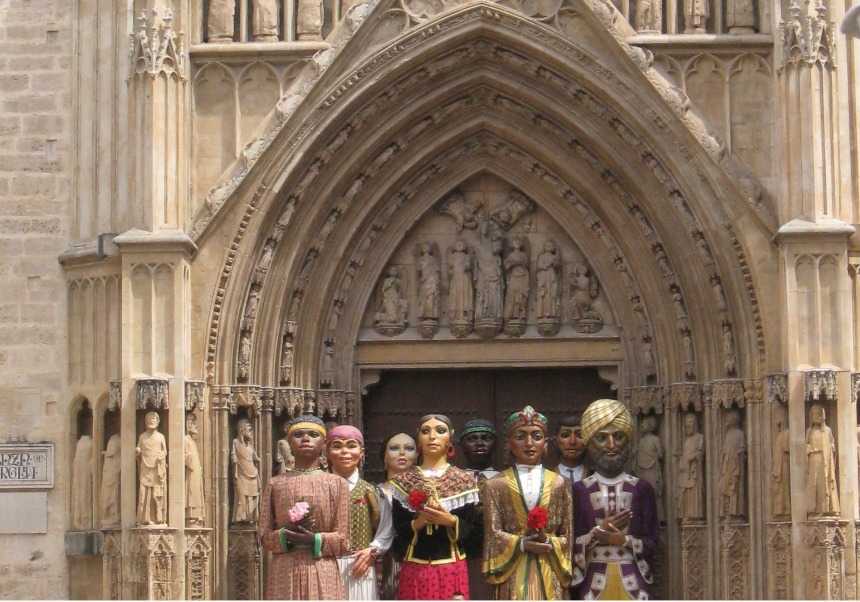The Historical Library of the Universitat exhibits the first book printed in Valencian language 550 years ago
- BibliotequesUV
- April 24th, 2024

This Thursday, 25th April, the Historical Library of the Universitat de València opens the exhibition ‘Trobes, 550 años de la imprenta en Valencia’ curated by Antoni Furió, Rosa M. Gregori Roig and Pau Viciano, in the Duc de Calàbria hall.
The exhibition commemorates the 550 anniversary of the arrival of the print to València, a historical and cultural landmark that gave way to the editing industry in Spain as a whole. The exhibition is presented throughout two halls, the Duc de Calàbria Hall of the Historical Library and the Beam Hall, located at the foundational building of the Universitat, which this year is celebrating its 525 anniversary.
The Obres o trobes en lahors de la Verge Maria, the first book printed in the Crown of Aragon and the first of literary nature of the whole Peninsula, was published in the year 1474, as a result of a poetry competition.
The print was invented in mid-15th century. Johannes Gutenberg printed in his typographical workshop in Maguncia the 42-line Bible. From this moment on, Europe stood witness to the great cultural revolution that this new technology based on the movable type press brought about, which, in barely twenty years, spread throughout Europe, ultimately reaching the city.
At that time, València was the most populated city of the Peninsula, as well as an important economic and financial hub with a very active port that connected with the main commerce routes. The economic prosperity of the city translated into an artistic and literary splendour, as attested by the Lonja building and the Valencian Government palace, amongst other great constructions of the century, as well as by the myriad of writers (Ausiàs March, Joanot Martorell, Jaume Roig, Isabel de Villena, Joan Roís de Corella...) that make the fourteen hundreds the Golden Age of Valencian literature.
The four elements that made the introduction of printing possible also coincided in Valencia. In the first place, German trader Jacob Vizlant, representative of the Great Ravensburg Trading Society, who had the idea of expanding his company’s range of goods with a new product, the printed book. In the second place, typograph Lambert Palmart, who was asked to come to Valencia by Vizlant in order to print the books of interest. In the third place, the cultural dynamism of the Valencian capital and the existence of a wide reading audience with the ability to acquire and read the printed books. Lastly, the celebration of a poetry competition in March 1474 in praise of the Virgin Mary, called by the viceroy Lluís Despuig and organised by the poet Bernat Fenollar, which brought together forty authors of different social strata, providing the perfect occasion for this to be the first book to be printed in Valencia.
From this moment onwards, Valencia had prints, typographs and book-making tools at its disposition and, soon after, was ready to export them. This way, a new network of professions and activities that revolved around the printed book was created. These ranged from publishers-booksellers and printers to general sellers and the public of readers who influenced the new printed book to imitate manuscripts.
Trobes: 550 años de la imprenta en Valencia shows this process through an exhibition pathway that develops in two spaces.
In the Duc de Calàbria Hall, together with the only known copy of Trobes, another 17 Valencian incunabula, works printed before 1501, are exhibited. This is the first time that this selection of incunabula jewels, mostly rare or unique known works, that form part of the bibliographic treasure guarded by the Historical Library of the Universitat de València. Amongst the Valencian incunabula exhibited there are such titles as Lo primer llibre del Crestià (Lambert Palmart, 1483); Tirant lo Blanc, by Joanot Martorell (Nicolás Spindeler, 1490); La vida de la sacratíssima Verge Maria, by Miquel Peres (Nicolás Spindeler, 1494); Lo quart del Cartoixà, by Joan Roís de Corella (Lope de la Roca, 1495; Pedro Hagenbach and Leonardo Hutz, 1495); Lo somni de Joan Joan, by Jaume Gassull (Lope de la Roca, 1497) or Regiment de la cosa pública, by Francesc Eiximenis (Cristóbal Cofman, 1499).
In the Beam Hall, an itinerary through the history of the print is exhibited. Through audio-visual materials and the exhibition of typographical tools, a deep dive into the works of a printing workshop is presented. Also exhibited there is a copy of the first printed book in Europe, the 42-line Bible, and of the blueprint of Antonio Mancelli, the oldest known in València (1608), to portray the world of printers and printing workshops of the time. The itinerary is closed with a general overview of the influence of Trobes through time and the two centenary commemorations of its publication, celebrated in 1874 and 1974.
For four months, Trobes: 550 will be exhibited in two of the halls of the La Nau Cultural Centre in order to remember the origin and evolution of a work of great relevance in Valencian history and culture.
As a complimentary activity, from 28 April to 26 May, a replica of the Gutenberg printing machine (property of the Asociación de Amigos del Museo de la Imprenta. Senado del Museo) will remain installed at the entrance of the Duc de Calàbria Hall and its operation will be showcased by stamping the first page of the incunabula Trobes, on Tuesdays, Thursdays and Sundays, from 10:00 to 13:00, and on Wednesdays, from 16:00 to 19:00.
The exhibition will be available for visits in the Duc de Calàbria Hall of the Historical Library and in the Beam Hall, located at La Nau Cultural Centre, until 8 September 2024.
File in: Biblioteca Històrica
















